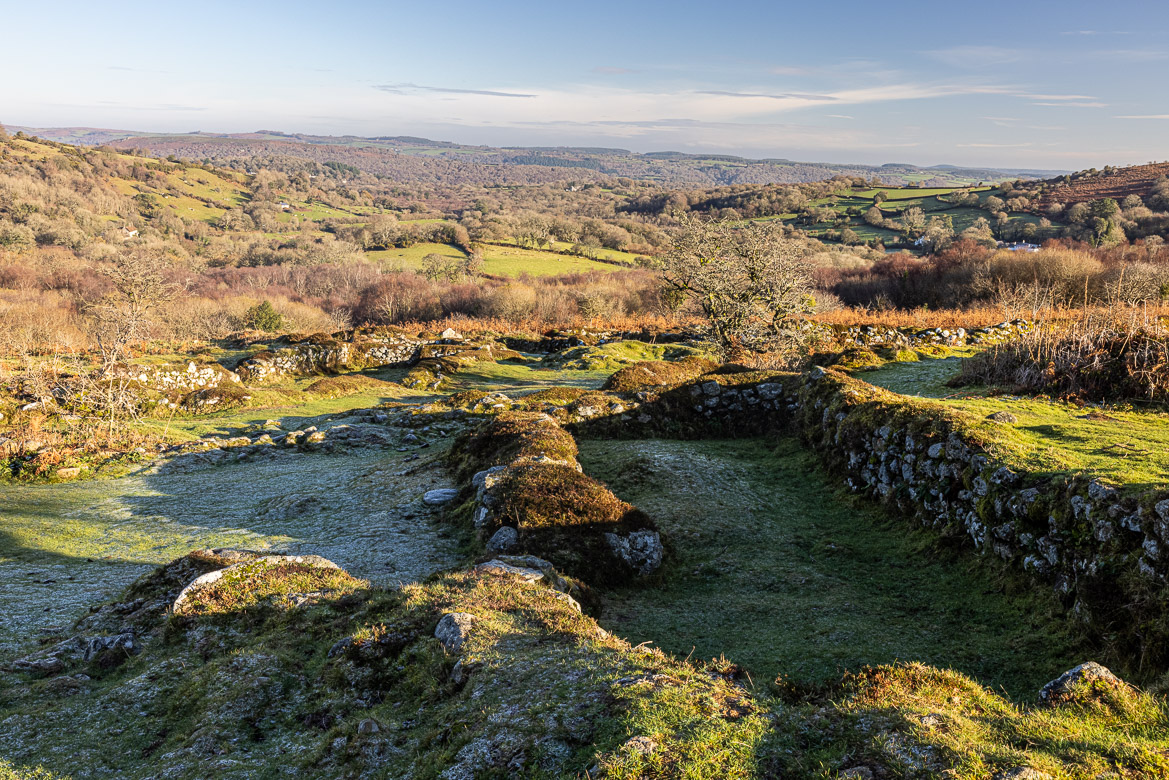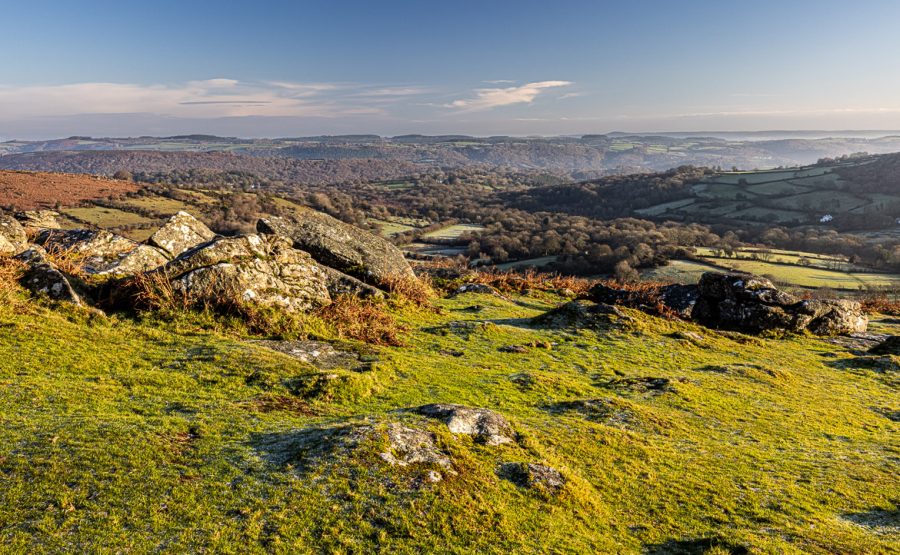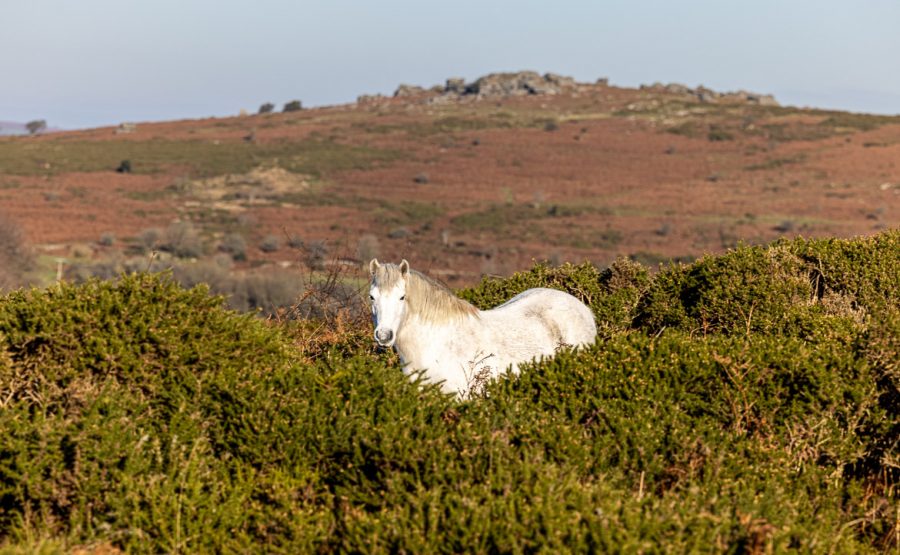
Dartmoor is mostly made up of granite that was created around 300 million years ago. Where erosion has laid the granite rocks bare, we have got the tors! There are around 160 tors on Dartmoor, most of them at higher altitudes, where the erosion has been most successful.
The highest point on Dartmoor is more than 600 metres above sea level. Most tors are around 400m altitude. Hound Tor is at an altitude of just more than 400 m overlooking vast moorlands. The granite rocks are layered and sometimes there are openings through the rock formations or caves. This has been caused by erosion and also by freeze and thaw action. Rain water seeps into the cracks, and when the water freezes it expands and causes the rocks to crack open.
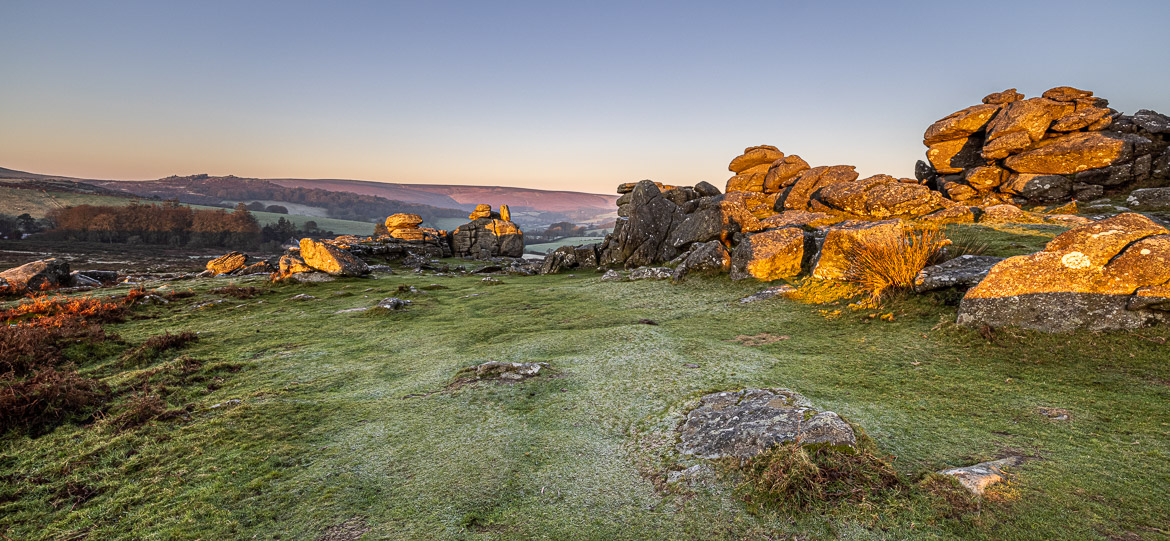
The stacks at Hound Tor and other tors have been formed like this. Near Hound Tor are the remains of the medieval village of Hundatora, where you can still see the ruins of a number of long houses housing both people and animals. People lived herein medieval times, but they moved out around the sixteenth century, probably because the climate deteriorated.
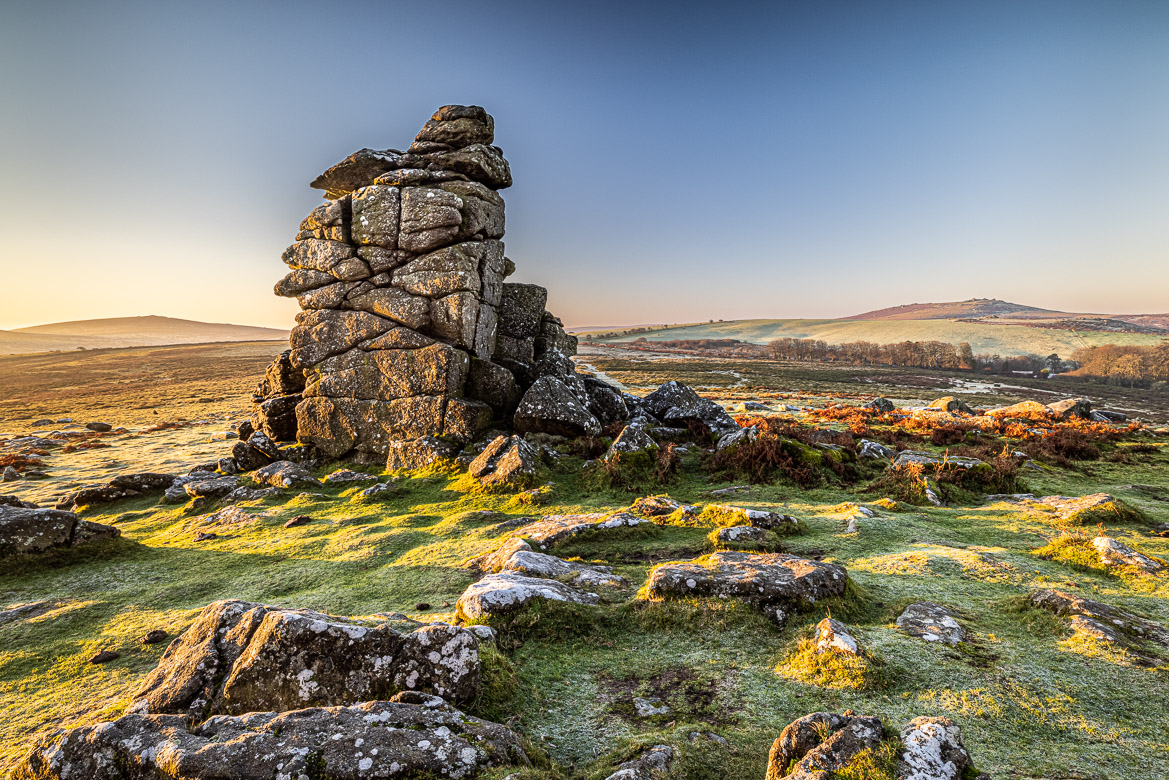
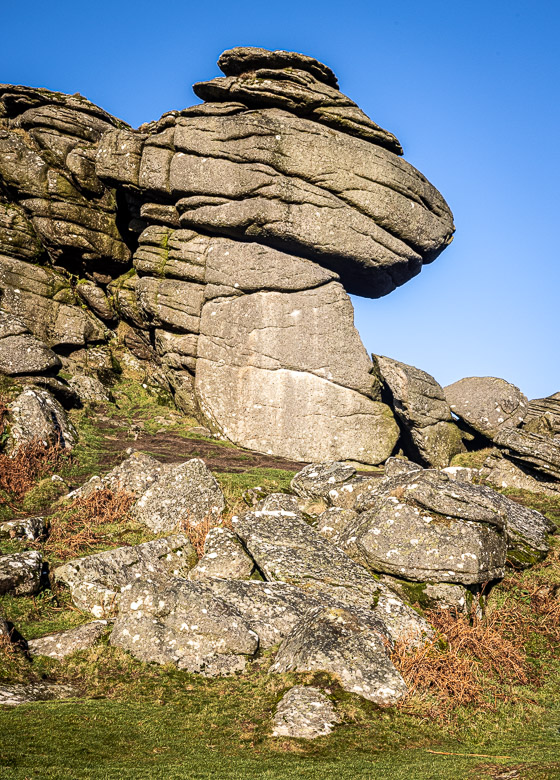
There are lots of legends about ghost dogs and a roaming great black hound at Hound Tor. That story inspired Arthur Conan Doyle to write the famous Sherlock Holmes story: The Hound of the Baskervilles.
Although the black hound at Hound Tor is a legend, the friendly Dartmoor ponies are very real and can be seen al around Hound Tor like on many other places on Dartmoor.
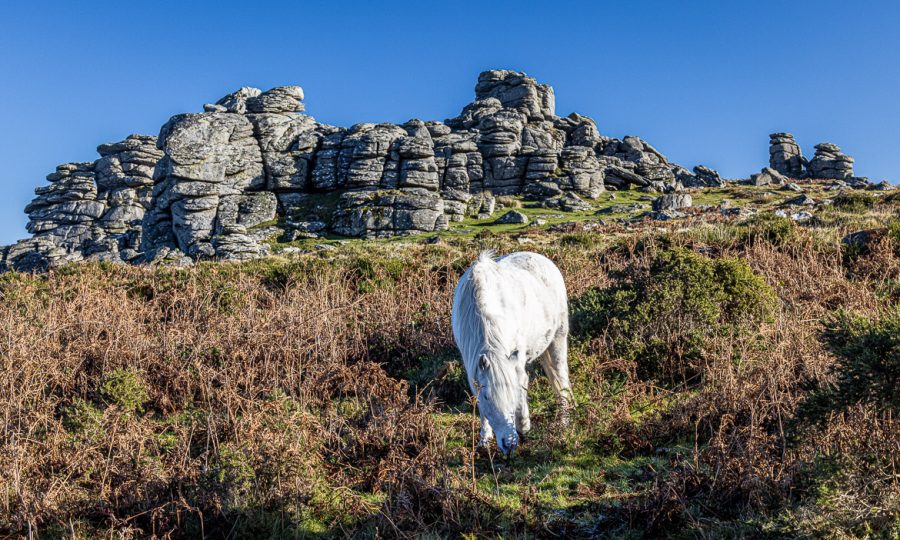
View from Hound Tor with the misty valley of River Exe in the very background Another Dartmoor pony near Hound Tor with the moorland beyond
